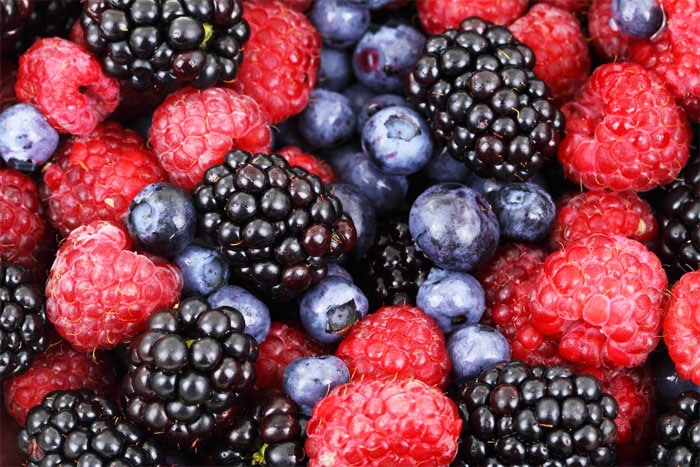
Written By: Gloria Tsang, RD
Title: Founding Registered Dietitian
Alumni: University of British Columbia
Last Updated on:

When I worked at the hospital, I made a Hall of Shame/Fame poster for a Nutrition Month event. Seven years later, it is March and it’s Nutrition Month again! I am writing about the same topic, but with seven more years of insight, to commemorate my mentors and their teachings!

Table of Contents
Most people often agree that croissants just taste good. It’s only a mixture of flour, butter, eggs and milk but once baked, who can resist a fluffy pastry made with eggs and butter?! A croissant bought from the local coffee chain can often contain up to 350 kcal with 19 g of fat! It is definitely not a healthy breakfast item to start off any day.
Not only is whole grain bread low in fat and calories (only 69 kcal/slice), it is also a good source of B vitamins, vitamin E, magnesium, iron and fiber as well as other valuable antioxidants. Adding some peanut butter and fresh fruit to your breakfast will make it more healthy and balanced.
A large order of fries from a fast food chain can contain up to 570 kcal with a whopping 30 g of total fat and 8 g of trans fat! In other words, 47% of the calories are from fat alone! This one is a no-brainer why you stay away.
Fresh potato with skin is a good source of vitamin C, vitamin B6, copper, manganese, and dietary fiber. In addition, potato is high in potassium, an important mineral essential in regulating blood pressure. Go easy on the toppings too – if possible, choose low-fat sour cream.
Not only is fish an excellent protein choice, it is high in polyunsaturated fat (the good fat) which is heart-health friendly. Therefore, it makes no sense to ruin such healthy food by deep-frying it. Such process can add an extra 100 kcal and it is mostly fat! If you dip your fish sticks in tartar sauce, you’ll easily load your fish with an additional 130 kcal. Not so smart!
It doesn’t have to be salmon. Any fatty fish such as mackerel, sardines, salmon and herring are rich in omega 3 fatty acids. The American Heart Association recommends eating fish at least 2 times a week. Baking is an ideal way of cooking fish as it does not require the use of extra oil and it can help the fish retain its good fats (as opposed to good fats draining out from the fish with other cooking methods).
My 6-year old niece told me during our Christmas party that she loved fruits. I was absolutely ecstatic to hear that. A minute later, she showed me her beloved “fruit”. It was a strawberry-flavored Fruit Roll-Ups made by General Mills! I explained that it’s not real fruit but she just did not understand why a package with a lovely strawberry picture is not fruit! Upon checking the ingredient list, I found 3 different kinds of sugar, hydrogenated vegetable oil (trans fat), and pear concentrate. It was outrageous not being able to find any ingredients remotely related to strawberries!
Fresh berries are loaded with Vitamin C, folate, fiber and phytonutrients. Indeed, they are some of the most powerful disease-fighting foods available as they top the ORAC score chart (a method of measuring antioxidant activity). Berries are easy to prepare – just wash and rinse – no need to peel at all!
Alumni: University of British Columbia – Gloria Tsang is the author of 6 books and the founder of HealthCastle.com, the largest online nutrition network run by registered dietitians. Her work has appeared in major national publications, and she is a regularly featured nutrition expert for media outlets across the country. The Huffington Post named her one of its Top 20 Nutrition Experts on Twitter. Gloria’s articles have appeared on various media such as Reuters, NBC & ABC affiliates, The Chicago Sun-Times, Reader’s Digest Canada, iVillage and USA Today.
bakery, berries, fish, fish sticks, french fries, fruits, potatoes, salmon, whole grains